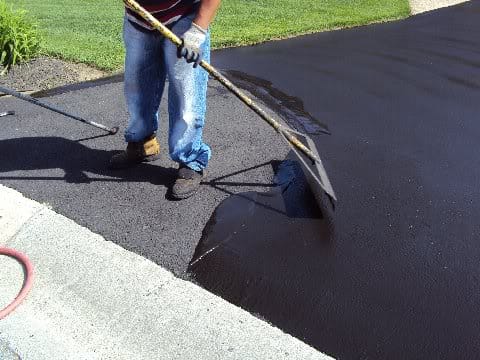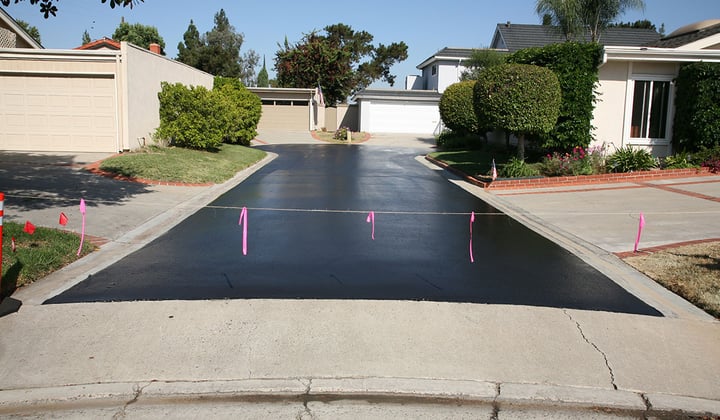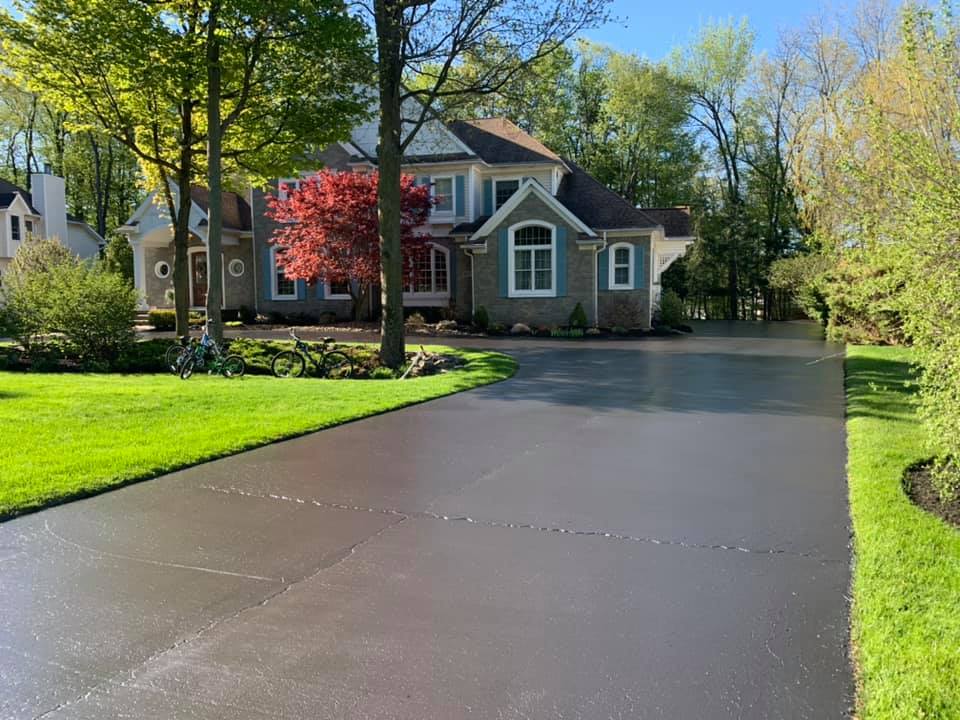Elevate Safety And Security and Charm: Angled Car Park Solutions with Asphalt Sealing
Elevate Safety And Security and Charm: Angled Car Park Solutions with Asphalt Sealing
Blog Article
Hot Mix Asphalt: A Lasting Remedy for Sidewalk
Warm Mix Asphalt (HMA) has arised as a leading lasting choice for sidewalk services, offering a myriad of ecological benefits and innovative modern technologies. As the need for environmentally friendly building and construction methods expands, discovering the nuances of HMA's sustainability can give important understandings into the future of sidewalk solutions.
Ecological Advantages of Hot Mix Asphalt

Furthermore, Warm Mix Asphalt helps to minimize metropolitan warmth island effects. Its dark shade soaks up sunlight, reducing the amount of warmth showed back into the environment contrasted to lighter-colored pavements. This can reduce ambient temperature levels in metropolitan locations, reducing the need for air conditioning and eventually minimizing power consumption.
In addition, Hot Mix Asphalt adds to boosted stormwater management. Its porous nature enables water to reenergize and penetrate the sidewalk groundwater supplies, decreasing overflow and the threat of flooding. These environmental benefits make Hot Mix Asphalt a sustainable choice for paving roads and highways.
Power Effectiveness in HMA Production
Is energy effectiveness an important element in the manufacturing of Warm Mix Asphalt (HMA)? Energy plays a significant duty in the manufacturing of HMA, impacting both cost and ecological sustainability. One crucial aspect of power effectiveness in HMA production is the usage of warm mix asphalt (WMA) technologies.
In addition, advancements in plant modern technologies have led to even more energy-efficient HMA manufacturing processes. By enhancing energy use in HMA manufacturing, the industry can minimize its carbon impact while maintaining high-grade pavement products.
Recyclability of Warm Mix Asphalt
The recyclability of Warm Mix Asphalt (HMA) is a critical facet of its sustainability and long-term environmental impact. HMA is among the most recycled products in the USA, with over 100 million tons of recovered asphalt sidewalk (RAP) being recycled annually in new sidewalk construction. Recycling HMA uses numerous ecological advantages, such as decreasing the requirement for virgin products, reducing power intake throughout manufacturing, and lowering the quantity of waste sent to land fills.
The process of reusing HMA entails grating the existing pavement, squashing it right into smaller pieces, and blending it with brand-new aggregate and asphalt binder to produce a recycled mix. Generally, the recyclability of HMA plays a considerable role in advertising sustainable practices within the pavement sector.

Long-Term Performance of HMA
Asphalt pavements demonstrate toughness and durability over an extended period, showing the long-lasting performance of Hot Mix Asphalt (HMA) The durability of HMA can be connected to its capability to endure rush hour lots, harsh climate condition, and the effects of aging. Studies have shown that properly designed and appropriately built HMA sidewalks can last for twenty years or more with routine maintenance. The secret to making best use of the lasting efficiency of HMA hinges on utilizing high-grade products, complying with finest practices in construction, and executing effective maintenance approaches. Proper water drainage, regular examinations, and prompt repair work are necessary for protecting the structural integrity of HMA sidewalks over time. In addition, improvements in HMA innovation, such as i loved this using polymer-modified binders and cozy mix asphalt, have additionally improved the sturdiness and longevity of HMA sidewalks. By prioritizing top quality building and construction and upkeep practices, HMA remains to confirm itself as a cost-efficient and sustainable option for lasting sidewalk facilities.

HMA: Toughness and Sustainability
Showing both sturdiness and sustainability, Hot Mix Asphalt (HMA) has actually ended up being a cornerstone in the building and construction of long-lasting sidewalk infrastructures - commercial parking lot paving. HMA's toughness comes from its capacity to endure hefty tons, harsh weather condition problems, and high web traffic volumes, making it a reliable option for roadways, highways, and airport runways. The make-up of HMA, which normally consists of aggregates, binder, and filler, plays a critical role in boosting its long life and resistance to tear and wear
In addition, HMA's sustainability hinges on its recyclability and energy-efficient manufacturing procedure. The capacity to more information recycle reclaimed asphalt pavement (RAP) in brand-new HMA mixtures minimizes the demand for virgin products and reduces the ecological impact of pavement building and construction and maintenance. Furthermore, the power efficiency of creating HMA hinges on its lower blending temperatures compared to other sidewalk products, causing reduced energy usage and greenhouse gas exhausts.
Conclusion
Finally, hot mix asphalt (HMA) uses a lasting remedy for sidewalk with its eco friendly attributes. HMA's recyclability, power effectiveness in manufacturing, and lasting sturdiness make it an eco-friendly choice for roadway building. By saving natural deposits, decreasing waste, and decreasing greenhouse gas exhausts, HMA plays a crucial role in advertising sustainability in framework advancement. Its ability to reduce urban heat island effects further emphasizes its relevance in developing environmentally conscious and resistant sidewalk systems.
HMA is one of the most recycled materials in the United States, with over 100 million loads of reclaimed asphalt sidewalk (RAP) being reused each year in new pavement building.The procedure of recycling HMA entails grating the existing pavement, crushing it into smaller sized pieces, and blending it with new accumulation and asphalt binder to create a recycled mix.Asphalt sidewalks show sturdiness and resilience over an extensive period, showing the long-term efficiency of Warm Mix Asphalt (HMA) Additionally, innovations in HMA innovation, such explanation as the usage of polymer-modified binders and warm mix asphalt, have actually further enhanced the durability and longevity of HMA pavements. The capacity to reuse recovered asphalt pavement (RAP) in new HMA mixtures minimizes the demand for virgin materials and minimizes the ecological influence of pavement construction and maintenance.
Report this page